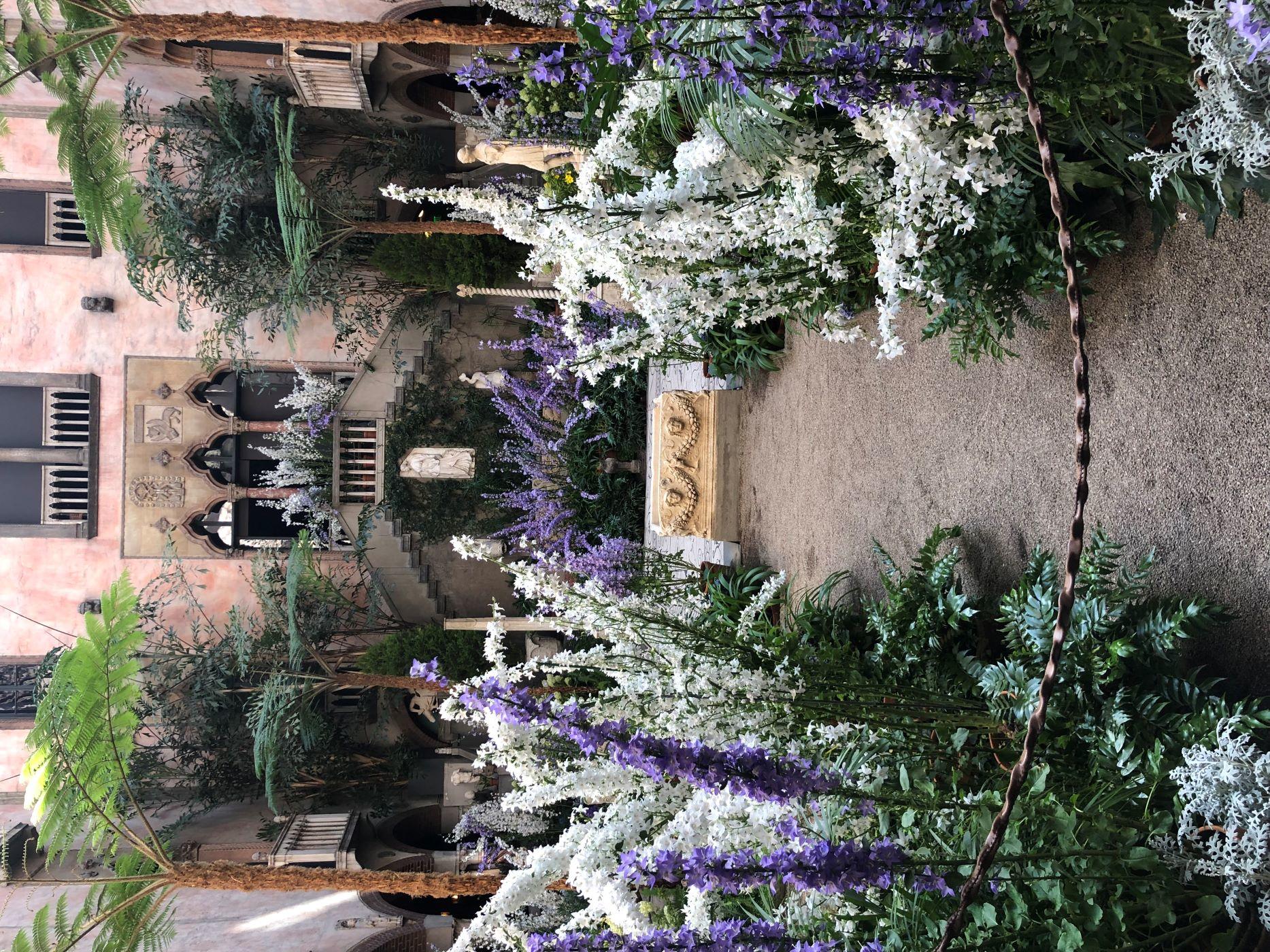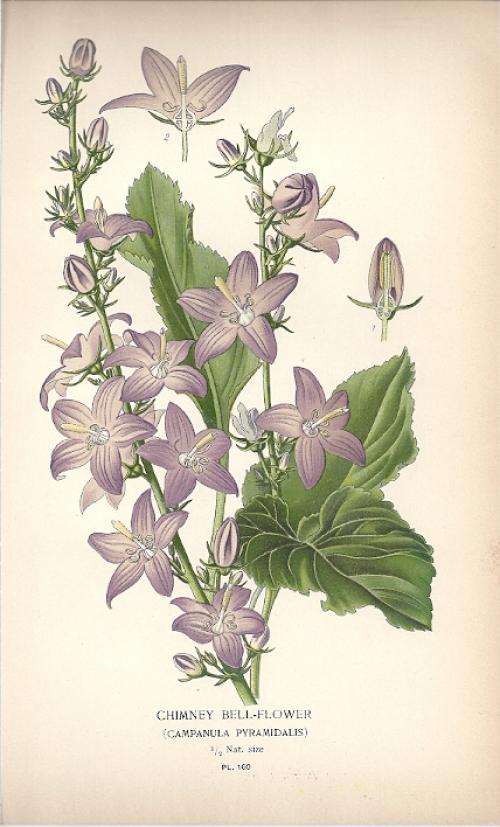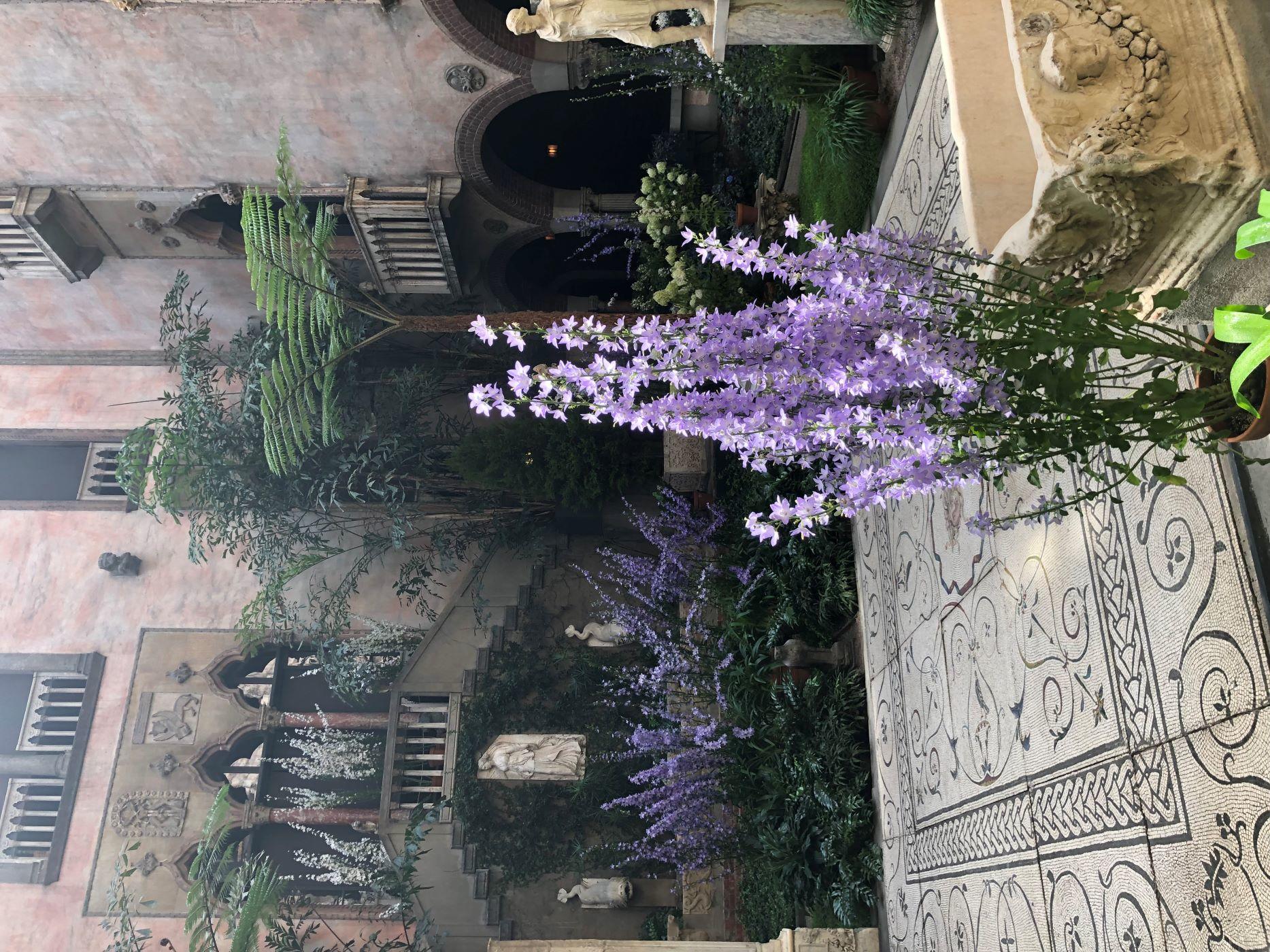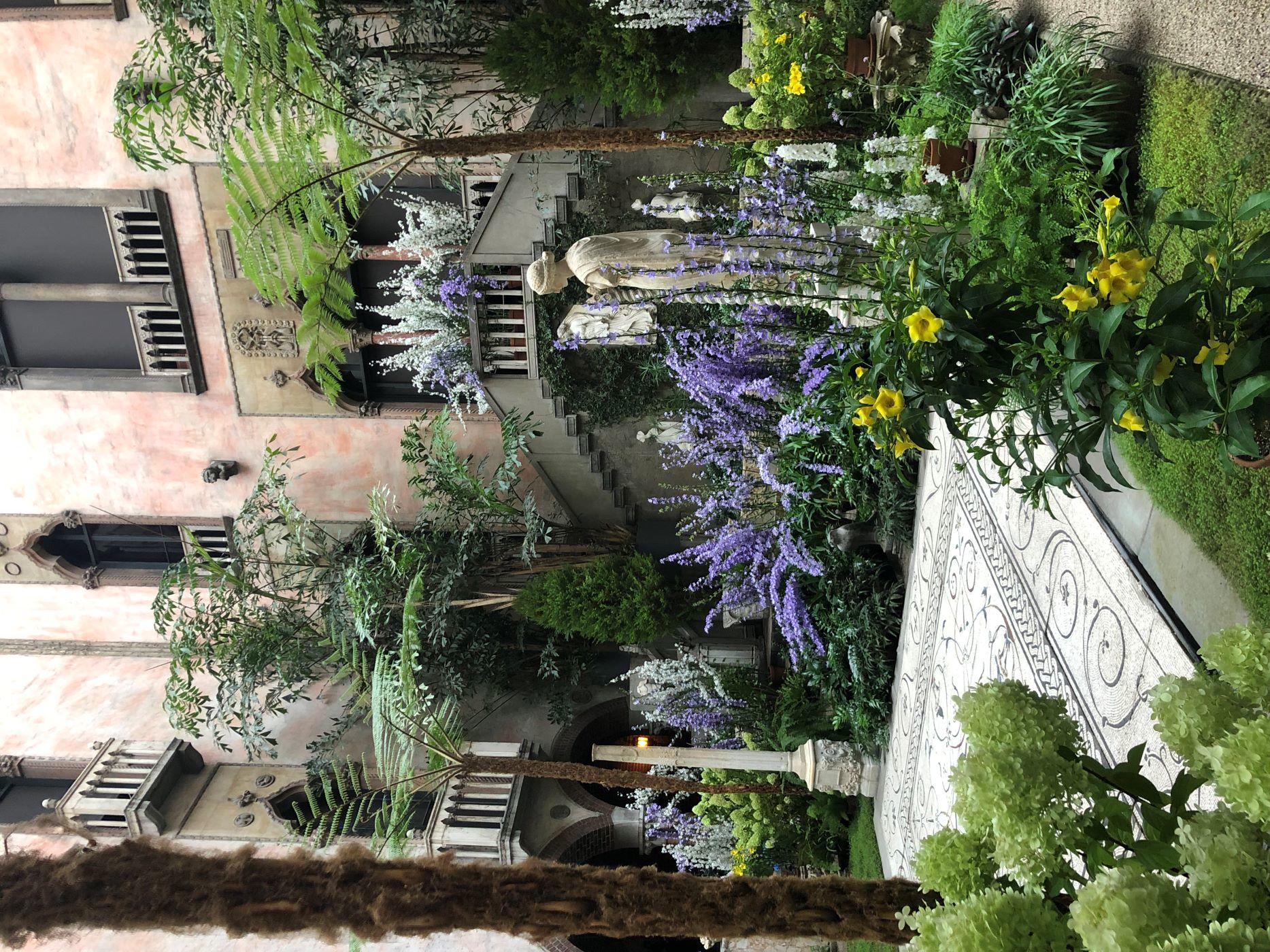Late summer in Isabella Stewart Gardner’s Courtyard, a true conservatory plant takes the stage. This enchanting bellflower bears heart-shaped leaves and twisting spires of starry blue and white flowers. Protected from winds and guarded by glass, the delicate, wand-like limbs elegantly reach for the sun. Shelter from the elements allows the chimney bellflower to attain perfection.

Chimney bellflower Courtyard display, 2021
Isabella Stewart Gardner Museum, Boston. Photo: Jenny Pore
THE HISTORY OF CAMPANULA
Native to the Adriatic coast of Italy, the chimney bellflower (Campanula pyramidalis) is right at home beneath the Venetian Gothic arches of the Gardner Museum’s Courtyard. In Latin, Campanula means “little bells''—a nod to its bell-shaped flowers. There are over 500 species of bellflowers, many of which are edible, medicinal, and symbolic in traditional folklore. Campanula pyramidalis is said to represent constancy. The entire plant is edible and nutritious, with leaves rich in vitamin C.

Chimney Bellflower from Edward Step’s Favourite Flowers of Garden and Greenhouse, vol. 3, p. 332, London, 1897. Chromolithograph
Bellflowers have long been associated with witches and fairies in mythology and used in charms to bring luck and compel truth. A cousin of the chimney bellflower, Campanula rapunculus is the bellflower from which the fairytale Rapunzel takes its name. Across the Atlantic, bellflowers indigenous to North America have been used by Native Americans both medicinally and as a ceremonial cleansing smoke.

Chimney bellflower Courtyard display, 2021
Isabella Stewart Gardner Museum, Boston. Photo: Jenny Pore
CAMPANULA IN THE CONSERVATORY
Campanula pyramidalis has been grown in Britain since the 16th century, coinciding with the appearance of conservatories, as the affluent desired to grow citrus fruits and other tender plants from the Mediterranean. During the 19th century, the heyday of conservatory construction, the chimney bellflower was noted as reaching the United States by horticulturist Bernard McMahon in his 1806 journal The American Gardener’s Calendar. In 1913, Campanula pyramidalis was praised as a superior conservatory specimen by Thomas Proctor, Superintendent of Blantyre Estate in Lenox, Massachusetts.
There is no question regarding the merits of Campanula pyramidalis as a decorative plant. It is invaluable, not only for its attractiveness when in flower, but also for its lasting qualities in the conservatory. We consider it by far the best thing we have as a flowering plant for that purpose. About one hundred and fifty plants of that variety alone are grown in ten-inch pots.
Amazingly, this is precisely the number and size of pots grown for the Gardner Museum's chimney bellflower Courtyard installation today, over 100 years later. The tradition of this display at the Gardner goes back many decades.

Chimney bellflower Courtyard display, 2021
Isabella Stewart Gardner Museum, Boston. Photo: Jenny Pore
CAMPANULA AT THE GARDNER
It takes two years to grow Campanula pyramidalis from seed to its six-foot maturity. The seeds are sown each year on New Year’s Day. As with most biennial plants, bellflower seedings are slow to develop. Throughout the year, they are nurtured in the Museum’s greenhouses and potted up into successively larger pots. By autumn of their first year, the bellflowers have reached their final pot size and are ready to be nestled into their winter cold frames for a period of dormancy. After this vernalization, the warmth of spring awakens the plants and they are moved out into the full sun.
Chimney bellflower crop in mid-production at the South Shore Nursery in Hingham, MA, 2022
Isabella Stewart Gardner Museum, South Shore Nursery, Hingham. Photo: Jenny Pore
Our team of horticulturists at the Gardner Museum nurtures two generations of the chimney bellflower simultaneously to ensure its display each summer. By late July, our bellflowers are teeming with local pollinators at the outdoor growing space of our South Shore Nursery, waiting to fulfill their promise. Come and visit the chimney bellflowers in Isabella’s Courtyard in August. They might just bring you good luck.
You May Also Like

The Courtyard
Explore the Museum

The Elevation of the Nasturtium
Read More on the Blog

Chrysanthemum Impressions
Read More on the Blog